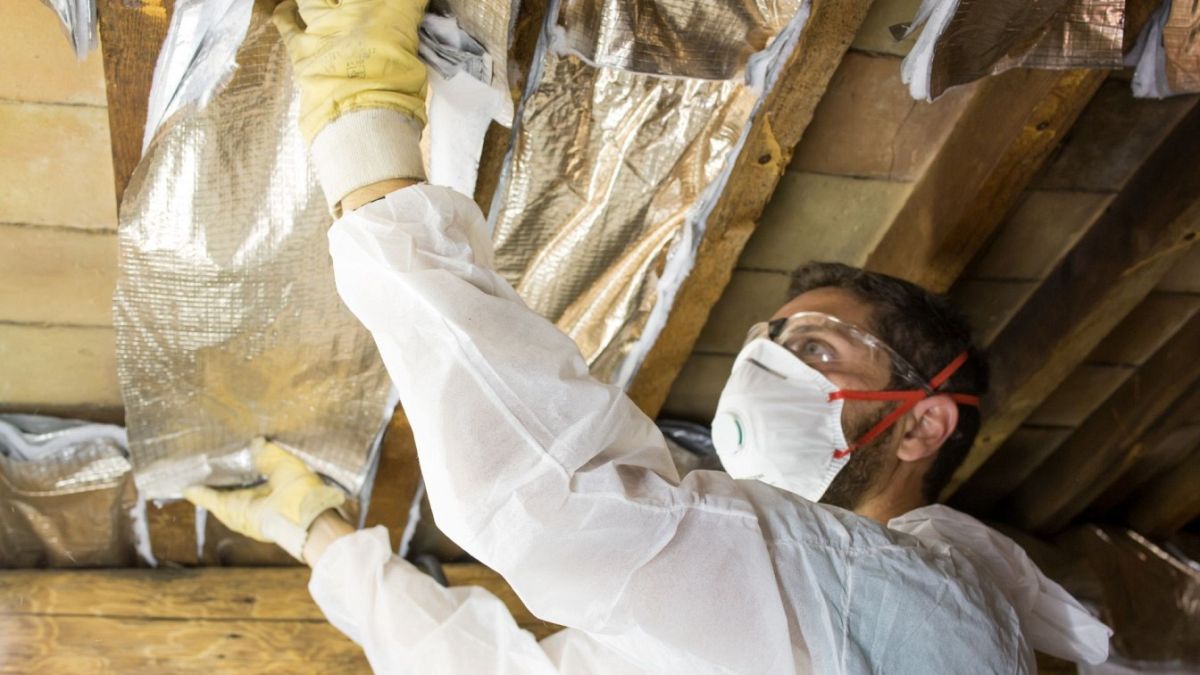Under current plans, it will take 90 years for the insulation in all of the energy inefficient homes to be upgraded.
Heat-leaking homes in England and Wales are unleashing 30 million tonnes of avoidable CO2 every year – the same amount as the entirety of Denmark – according to a new report.
The good news? Upgrading the countries’ most energy inefficient properties could eliminate these unnecessary emissions.
But it will be no easy task: around 14 million homes – more than half of the two countries’ housing stock – have dire energy efficiency ratings, the analysis by Friends of the Earth reveals.
At the current glacial pace, it will take 90 years for the insulation in all of these homes to be upgraded to meet suitable energy efficiency standards.
That’s why the environmental network is calling on the UK’s new Labour government to make warm, climate-friendly homes a priority.
What are the UK’s energy efficiency standards?
Homes in England and Wales are granted an Energy Performance Certificate (EPC) based on their energy efficiency. These run from bands A to G, with A being the most energy efficient.
The ratings take into account a property’s energy use, CO2 emissions and energy efficiency measures like insulation, solar panels and window glazing.
Currently, it is illegal to rent out properties with an EPC rating below E – a standard that may become stricter in the coming years.
Only 45 per cent of homes across England and Wales meet sufficient energy standards of EPC C and above – meaning 55 per cent fail to retain heat adequately, emitting needless CO2 in the process.
“When we talk about emissions that are contributing to climate change, we often think of transport or big fossil fuel projects as the main drivers – but our heat and energy-leaking homes are some of the biggest culprits,” says Anna Roguski, senior climate campaigner at Friends of the Earth.
“So much in fact, they’re adding the same amount of CO2 to our atmosphere as a small country. That’s astounding, especially when it’s a totally preventable problem.”
Improving homes’ efficiency could cut energy bills
Improving the energy efficiency of homes in the UK would not only cut carbon emissions and boost energy security – it could help slash energy bills, too.
The UK government says it aims to raise all fuel-poor homes – those with low incomes and high energy costs – to at least a band C by 2030, and as many homes as possible by 2035.
Yet the rate of improvement has stagnated over the last decade, after the Conservative government reversed progressive green policies.
This has added £22 billion (€26.3b) to the nation’s energy bills since 2015, according to analysis by Carbon Brief.
How can the UK improve the energy efficiency of homes?
Tackling this issue head on could help the UK meet its 2030 climate targets, which it is currently on track to overshoot.
Leading the recently elected Labour government, Prime Minister Keir Starmer has promised a renewed focus on insulating the UK’s heat-leaking homes.
“The new Labour government’s promised Warm Homes Plan must be a radical departure from what we’ve seen over the last decade of decline and get to the very heart of these dual crises,” says Roguski.
Various schemes are in place to help households improve their energy efficiency, some of which are funded by taxpayers with others backed by energy suppliers or energy bill levies.
It is hoped these will be given a much needed boost during this week’s Labour Conference.
However, the cold season looks bleak for millions of pensioners across the UK whose ‘winter fuel payment’ subsidy was recently scrapped by the new government.
Friends of the Earth has called for this to be reinstated ahead of the introduction of a new social tariff on energy prices, which will offer affordable energy rates to low-income houses.
A debate on the issue due to take place today has been pushed back to Wednesday – the final day of the conference – with a union-backed vote potentially set to reverse the decision.
Which UK homes have the worst energy efficiency ratings?
Across the UK, Wales has the lowest average rating, according to government data, followed by England, while Northern Ireland and Scotland fare slightly better.
Friends of the Earth’s analysis reveals that Birmingham Yardley in England and Dwyfor Meirionnydd in Wales are the constituencies with the highest proportion of poorly insulated homes – each with 78 per cent below EPC C.
They’re followed by Birmingham Hall Green and Moseley, Southend West and Leigh and Castle Point in Essex all with 74 per cent.
Earlier this year, research from the Institute of Health Equity and Friends of the Earth found that nearly 10 million British households were at crisis point last winter due to high heating costs and the associated health impacts of cold homes.
With climate change taking grip and bills projected to rise again this winter, “we cannot afford to waste a second longer in rolling out a national insulation programme”, says Roguski.
Checkout latest world news below links :
World News || Latest News || U.S. News
The post Energy-leaking homes some of ‘biggest culprits’ of UK climate change appeared first on WorldNewsEra.

